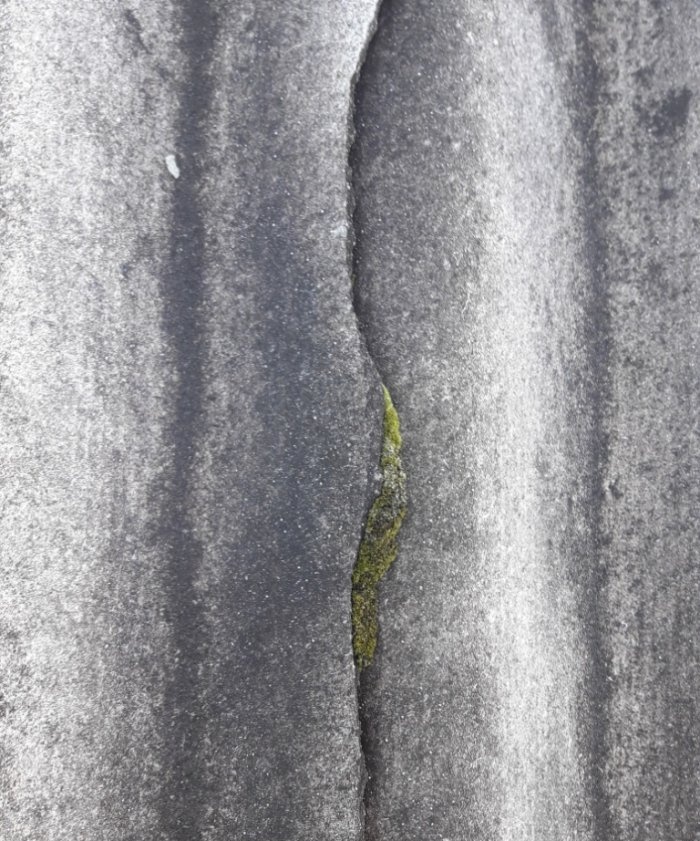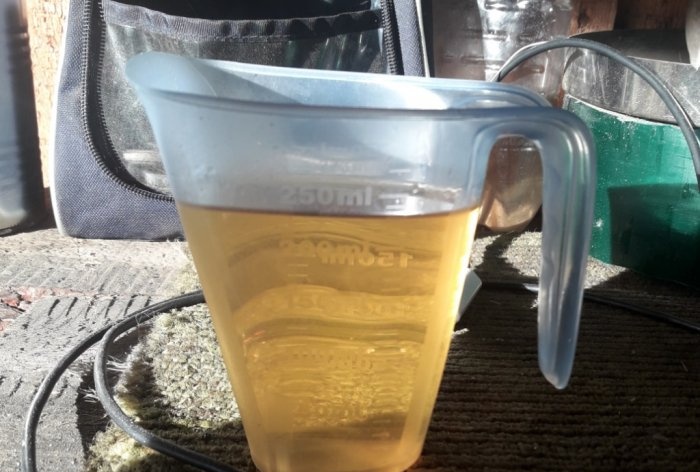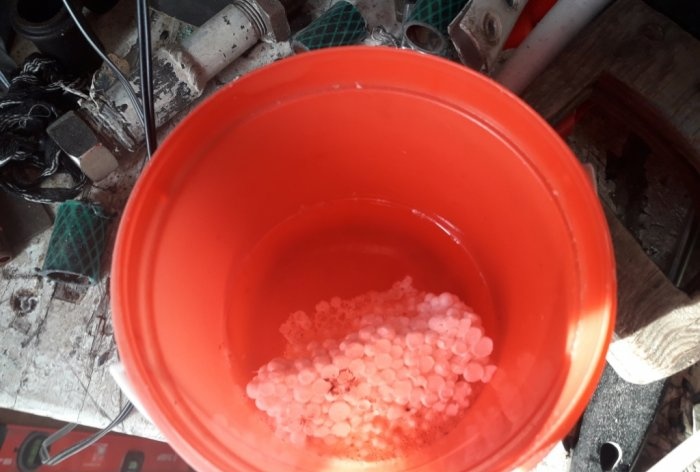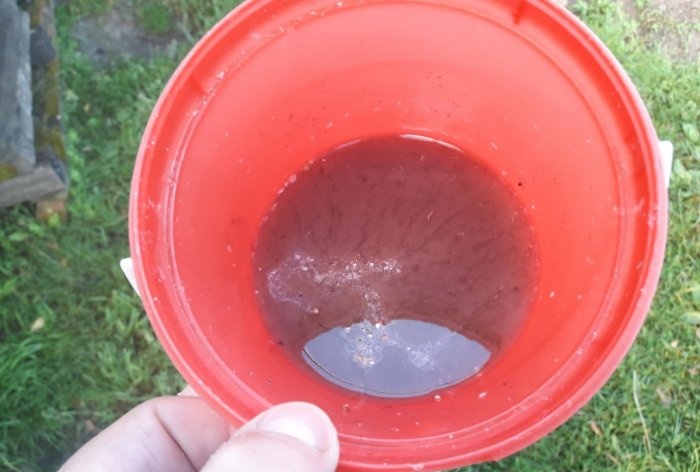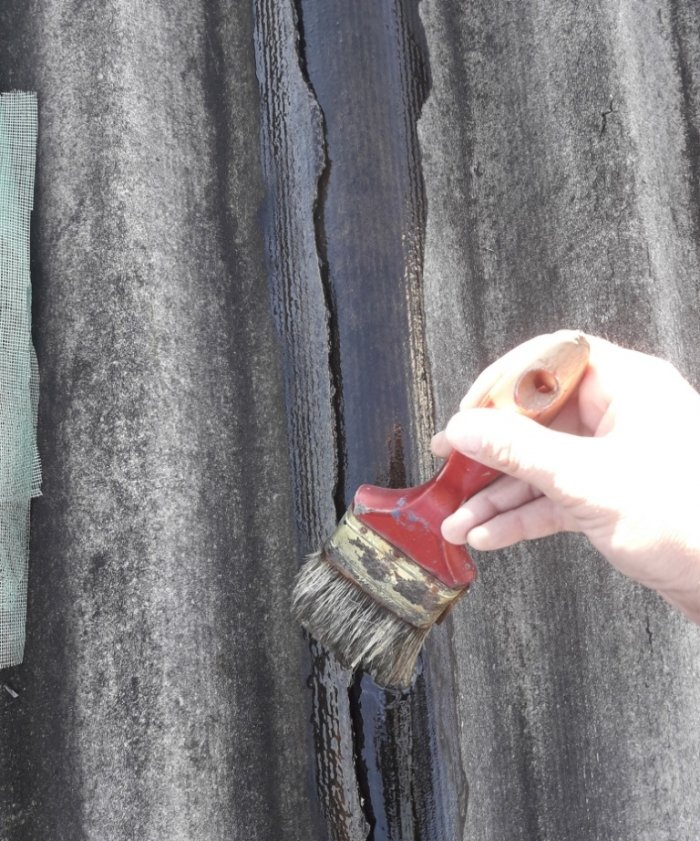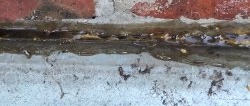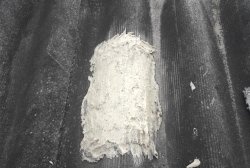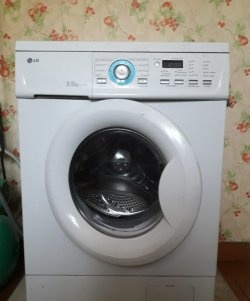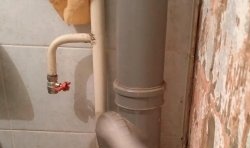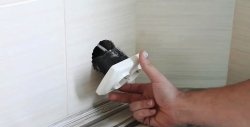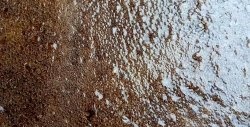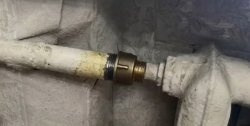Slate - the material for covering roofs is quite good and practical. And it is relatively inexpensive in comparison with other, more modern and stylish coatings. But it has one good disadvantage; He's too fragile. Especially after some time has passed. As the slate on your roof ages, it develops cracks and holes. To avoid these troubles, it is necessary to clean the roof at least once every six months (in the spring, after the snow melts and in the fall, after the leaves fly off the trees) with a broom or brush. It is even more necessary if trees grow near the building. If this is not done, fallen leaves, pine needles and small twigs from trees rot on the covering, and green moss and fungus appear and begin to spread, as a result of which the slate deteriorates and cracks and holes form on it.
By following these simple steps, you will significantly extend the service life of this coating. However, sooner or later, cracks in the slate will appear. And here I want to recommend one way to eliminate a crack or a small hole in a slate sheet if it is not possible to replace it.
Will need
- Gasoline (I used AI-92 brand).
- Styrofoam.
- Fine nylon mesh (fiberglass is possible).
- Brush.
- Scissors.
- Solvent.
- Rag.
- Hard brush.
Preparing the glue
First, let's prepare our homemade glue, not forgetting about safety precautions; Make sure there is no open flame nearby, because we will be working with gasoline! And try not to inhale gasoline vapors - this can affect your health in a bad way!
The work will be more convenient, in my opinion, if the glue is in some kind of container with a wide neck, like a plastic mayonnaise bucket. So, pour two hundred and fifty milligrams of gasoline into a measuring cup (the higher its octane number, the easier and faster the foam will dissolve in it) and pour it into a bucket.
I used 92 gasoline, but since it was quite stale (I drained it from an old motorcycle), and probably stale, I had to splash another fifty milligrams of 646 solvent into it.
If you are using fresh 92 or 95 gasoline, there is no need to pour solvent into it - it will do an excellent job with foam. Now we break the foam into pieces of suitable size and put it in a bucket of gasoline. The foam dissolves there almost instantly, effectively hissing and bubbling.
We continue to dissolve pieces of foam until the resulting glue acquires a gray consistency, similar to organic wallpaper glue; just as viscous and thick enough to stay on the brush and, later, on the nylon mesh.
Next, we put everything we need into a bag; a bucket of freshly prepared glue, a nylon mesh, scissors, a brush, a solvent, a cloth and we climb onto the roof, to the damaged place on the slate, not forgetting, again, about safety precautions.
Repairing slate
Now you need to clean the gluing area (fields, about five centimeters from the edges of the crack) with a stiff brush, removing debris, dust and sand. Next, moisten a cloth with solvent and wipe the areas cleaned with a brush where the glue will lie.
Apply a layer of glue to the treated edges of the crack with a brush.
We lay a nylon mesh over the crack with glued edges. We cover it all with glue on top.
Now you need to wait two to three hours for the glue to dry a little. And during this time you can catch your breath from gasoline fumes! After the designated time, we go back up, apply a fresh layer of glue to the slightly dried glue and lay the mesh as a second layer to, so to speak, consolidate the result. And now once again, thoroughly, and not sparing the glue, apply the last layer of glue on top. Polystyrene foam dissolved in gasoline will tightly cling to the slate, so that no bad weather will tear it off or wash it away! You can, if desired, before it starts to dry out, sprinkle the whole thing on top with dry cement so that the repaired section of the roof does not catch the eye if it is in a visible place. This concludes our work. The rest is a matter of time. Seven to nine hours will be enough for gasoline vapors to erode from the glue and for it to further harden. Before starting work, do not forget to find out the weather forecast for the next day, since excess moisture will obviously not benefit such work. Such repairs will extend the life of the slate by at least another couple of years. Well, or until the opportunity arises to replace the old coating with a new one.
